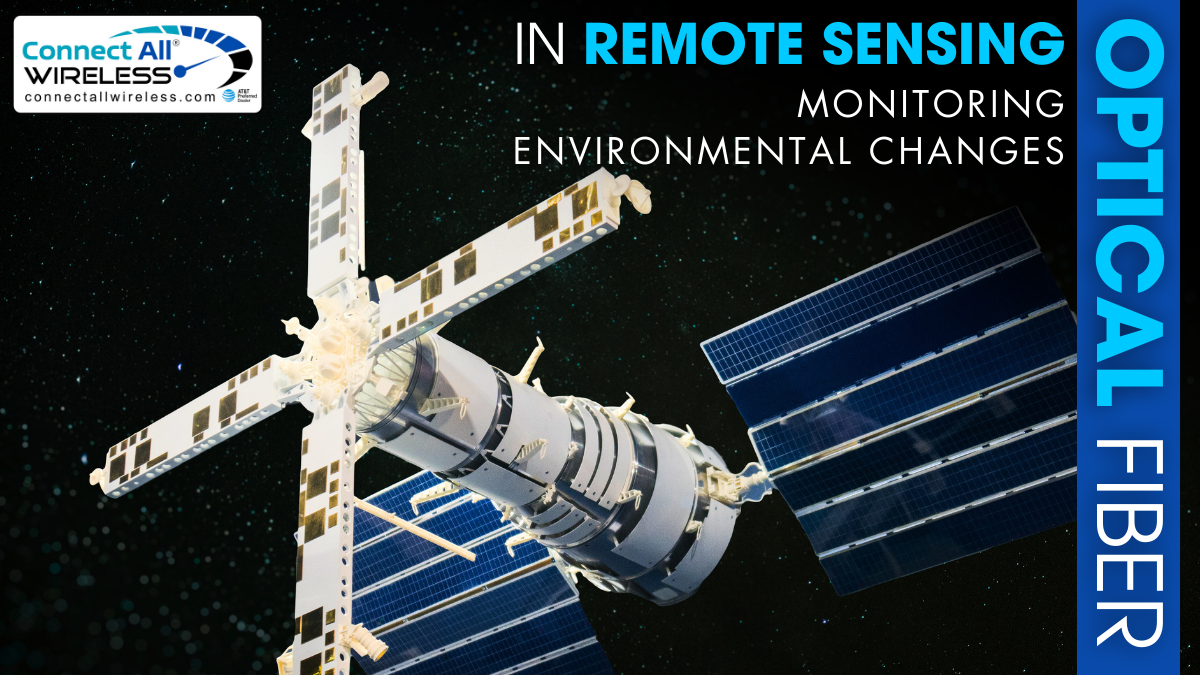Optical Fiber in Remote Sensing: Monitoring Environmental Changes
May 10, 2024Remote sensing, the science of acquiring information about objects or areas from a distance, has long been a critical tool in monitoring and understanding environmental changes. From tracking deforestation to monitoring sea levels, remote sensing technologies play a vital role in environmental research and conservation efforts.
In recent years, optical fiber has emerged as a powerful tool in remote sensing, offering unique capabilities for monitoring environmental changes with unprecedented precision and efficiency. In this blog post, we will explore how optical fiber is revolutionizing remote sensing and its applications in monitoring environmental changes.
The Role of Remote Sensing in Environmental Monitoring:
Before delving into the role of optical fiber, it’s essential to understand the significance of remote sensing in environmental monitoring. Traditional remote sensing techniques, such as satellite imagery and aerial photography, have been instrumental in providing valuable data on various environmental parameters, including land cover, vegetation health, and atmospheric conditions.
These techniques allow researchers to collect data over large areas quickly, providing insights into global environmental trends and patterns.
Challenges with Traditional Remote Sensing Techniques:
While traditional remote sensing techniques offer valuable data, they also have limitations. Satellite imagery, for example, may be affected by cloud cover, limiting data acquisition during inclement weather conditions.
Additionally, satellite sensors may have spatial or spectral resolutions that are not sufficient for certain applications requiring high levels of detail. Aerial surveys, while offering higher resolution imagery, can be costly and time-consuming to conduct.
The Emergence of Optical Fiber in Remote Sensing:
Optical fiber technology has emerged as a game-changer in remote sensing, offering several advantages over traditional techniques. Unlike satellites or aircraft, optical fiber sensors can be deployed on the ground or submerged underwater, providing continuous monitoring capabilities in remote or challenging environments.
Additionally, optical fiber sensors are immune to electromagnetic interference, making them ideal for use in areas with high levels of electromagnetic activity.
Principles of Optical Fiber Sensing:
At the heart of optical fiber sensing is the principle of light propagation through optical fibers. Optical fibers consist of a core surrounded by a cladding layer, which guides light along its length through total internal reflection. By introducing changes in the optical properties of the fiber, such as bending, stretching, or variations in refractive index, it is possible to measure environmental parameters such as temperature, pressure, strain, and chemical composition.
Applications of Optical Fiber in Environmental Monitoring:
Optical fiber sensors have a wide range of applications in environmental monitoring, including:
- Structural Health Monitoring: Optical fiber sensors can be embedded in infrastructure such as bridges, dams, and buildings to monitor structural integrity and detect signs of deterioration or damage.
- Geophysical Monitoring: By burying optical fiber cables in the ground, researchers can measure soil moisture, temperature, and seismic activity, providing insights into geological processes and potential hazards.
- Oceanographic Monitoring: Submarine optical fiber cables can be equipped with sensors to monitor ocean temperatures, currents, and acidity levels, aiding in the study of climate change and marine ecosystems.
- Atmospheric Monitoring: Optical fiber sensors can be deployed in the atmosphere to measure parameters such as air pollution levels, greenhouse gas concentrations, and weather conditions, contributing to climate research and air quality monitoring efforts.
Case Study: Fiber Optic Sensing in Forest Fire Detection:
One notable application of optical fiber sensing in environmental monitoring is in forest fire detection. Traditional methods of forest fire detection, such as satellite imagery and ground-based observation towers, may have limitations in detecting fires in remote or densely forested areas.
Optical fiber sensing offers a complementary approach by deploying sensor cables along the forest floor or canopy. These sensors can detect changes in temperature and smoke density, allowing for early detection and rapid response to forest fires, thus minimizing environmental damage and protecting wildlife habitats.
Conclusion:
In conclusion, the integration of optical fiber technology into remote sensing has ushered in a new era of environmental monitoring, offering unparalleled precision and efficiency. By leveraging the unique capabilities of optical fiber sensors, researchers can gather real-time data on environmental parameters critical for understanding and mitigating the impacts of climate change. As optical fiber continues to evolve, its applications in remote sensing will expand, contributing to a deeper understanding of our planet’s ecosystems and aiding in conservation efforts worldwide.
Moreover, the advancements in optical fiber technology hold promise beyond environmental monitoring. High-speed fiber internet services in Michigan, for instance, benefit from the same underlying principles of light propagation and data transmission.
The reliability and bandwidth capacity of optical fiber networks make them ideal for delivering high-speed internet access to communities, businesses, and institutions across the state. By investing in optical fiber infrastructure, Michigan can not only advance environmental research but also accelerate economic development and enhance connectivity for its residents.


